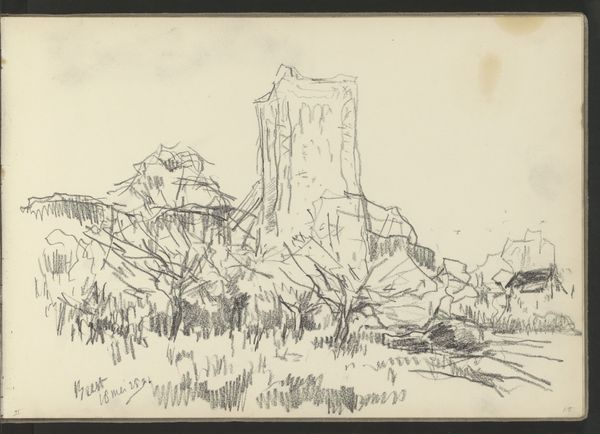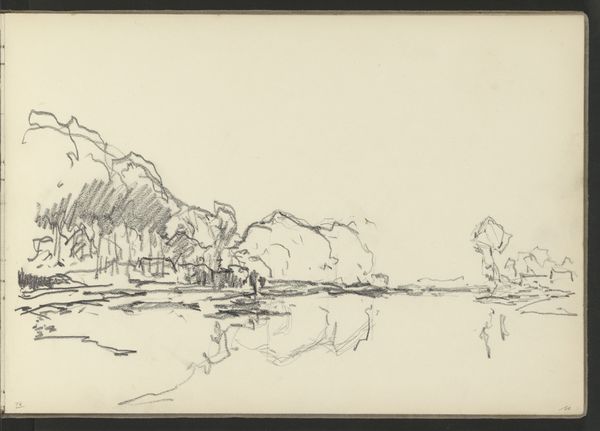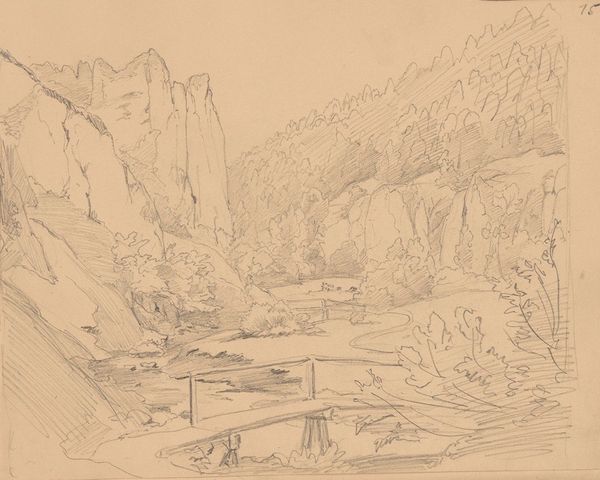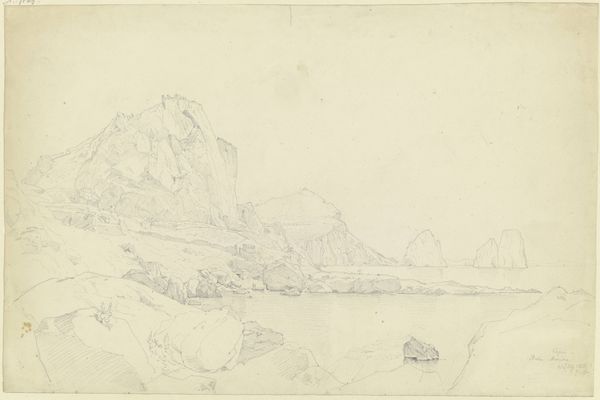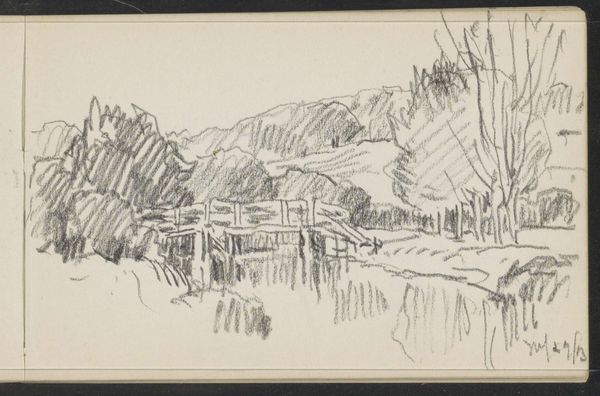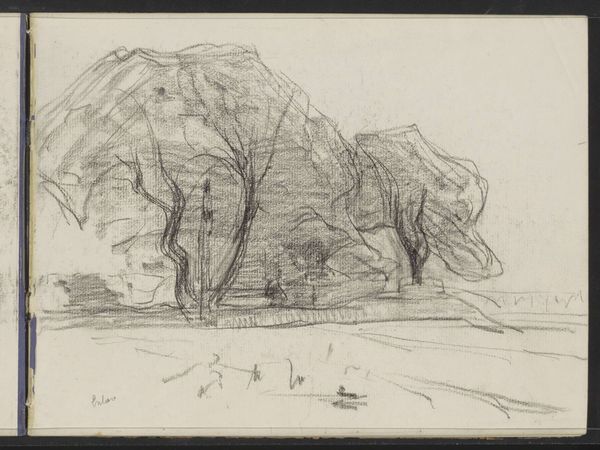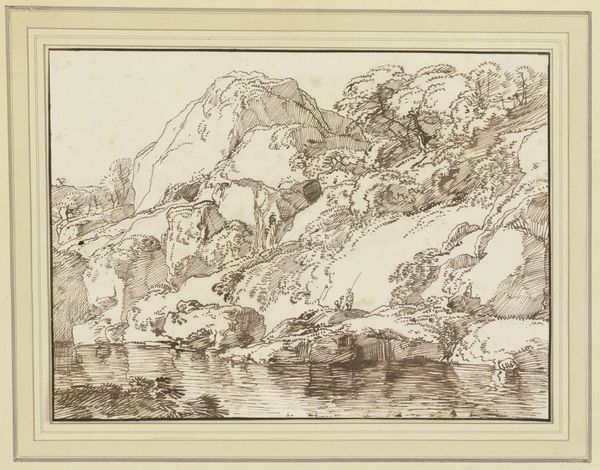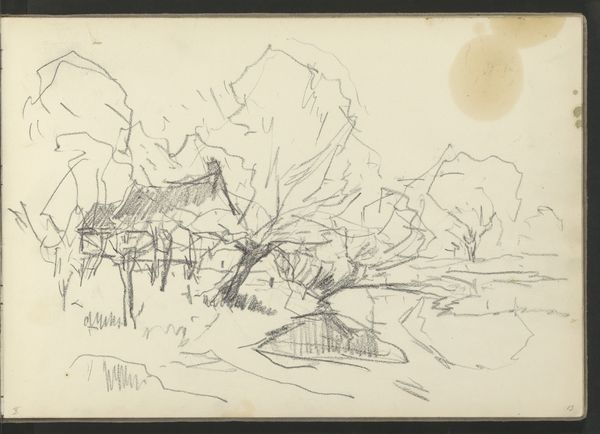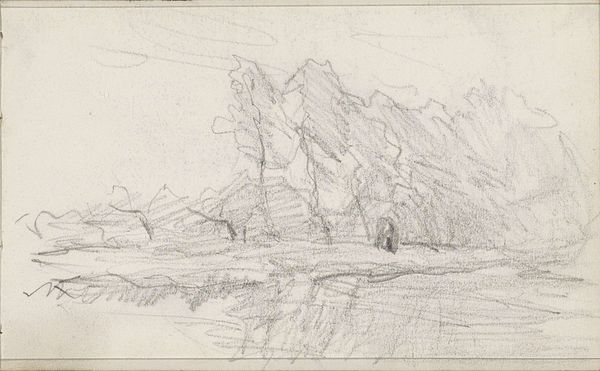
drawing, graphite
#
drawing
#
ink drawing
#
pen illustration
#
pen sketch
#
landscape
#
graphite
#
realism
Copyright: Rijks Museum: Open Domain
Curator: Well, here we have Egbert Rubertus Derk Schaap's "Dorpsgezicht met een brug over een rivier," a graphite and ink drawing dating back to around 1891. Editor: There’s an undeniable lightness to this sketch. The overall effect is rather melancholic—all of the grey tones evoke a subdued feeling. Curator: Indeed. Considering Schaap’s historical context, this landscape offers a fascinating insight into the socio-political landscape of the Netherlands during that period. You see the way the bridge physically connects parts of the village, mirroring how infrastructures influence power dynamics and social connectivity? Editor: From a formal perspective, the use of line is remarkable. Notice how the repetitive strokes create a sense of depth and movement, guiding the eye through the composition from the foreground river and boat to the background of foliage and architectural structures? It's all line, creating texture without the use of value. Curator: Absolutely. One must also question what’s not there—the implied narrative behind this tranquil image. The absence of people, perhaps a reflection on a lack of visible agency of ordinary villagers within grand socio-economic change of the time? The sketch becomes a silent witness to their unspoken stories, capturing the social realities of late 19th-century rural life. Editor: And consider the use of negative space. The sketch feels unfinished in places, but that openness emphasizes the deliberate lines Schaap *does* commit to paper, making them that much more evocative, suggesting spatial and even architectural volume. Curator: I agree. The way he uses graphite and ink invites conversations around how the work operates within prevailing ideologies concerning labor, class, and environmental concerns that were becoming more publicly recognized. Editor: Ultimately, this image and its understated quality of lines invite contemplation on the relationship between surface and depth. Curator: It makes you consider, doesn’t it, how visual representations can encapsulate socio-cultural currents. Editor: Yes. It is about an evocative organization of space, that holds a powerful mood and the artist's perspective.
Comments
No comments
Be the first to comment and join the conversation on the ultimate creative platform.


